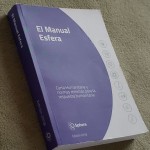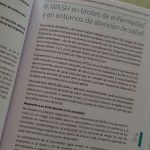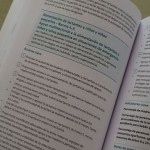The importance of an assertive humanitarian response
By the year 2030, we all have a responsibility: the commitments made at the first World Humanitarian Summit in 2016, proposed in the 2030 Agenda for Sustainable Development. That year, representatives of the 193 member states of the UN met in New York and recognized that the eradication of poverty in all its forms and dimensions, including extreme poverty, is the greatest global challenge and an indispensable requirement for sustainable development.
To help the planet and governments to promote worldwide transformation, we all need to know and know how to act in situations in which populations are exposed to risks. And it’s not just about extreme cases, like a civil war or external invasion, but about situations that multiply in cities or neighborhood where you live, where families may be experiencing deprivation of basic supplies like water and food, or living in subhuman conditions, or even children who are under the care of abusive parents or guardians.
The cases of populations exposed to risk erupt all around the planet. Data from the Global Trends report published annually by the United Nations High Commissioner for Refugees (UNHCR) reveals that 70 million people around the world have been forced to leave their homes since the UN agency took action. Of those, 25 million are refugees, half of whom are children and youth under the age of 18. Created to help organizations and states plan humanitarian responses, the report also points out that every minute 25 people are forcibly displaced as a result of conflict or persecution.
Aware that it is vital to plan and execute humanitarian responses, the Fraternity – International Humanitarian Federation (FIHF) has incorporated the practices and standards established in the Sphere Handbook to further qualify its team of voluntary missionaries and plan the humanitarian missions it carries out in Brazil and around the world. The Sphere Handbook is the outcome of the Sphere Project, a movement created in 1997 by a group of humanitarian non-governmental organizations, the Red Cross and Red Crescent Movement to improve the quality of humanitarian responses and for organizations to take responsibility for their actions. For two decades, the Sphere team has been spreading its essential beliefs around the world:
- People affected by disasters or conflicts have the right to live with dignity and therefore to receive assistance.
-
All possible measures must be taken to alleviate human suffering caused by disasters or conflicts.
Created in 1998, the Sphere Handbook has been adopted by governments, donors, the Armed Forces and the private sector to guide their aid actions or those in which they act jointly with humanitarian organizations. In Brazil, a group of 600 missionaries and Fraternity – Humanitarian (FIHF) lifetime collaborators are participating in the in-house Sphere Handbook training cycle. Training is conducted by the FIHF missionaries presently serving at Colombia Humanitarian Mission, as a response of the affiliated Fraternity – International Humanitarian Missions (FIHM) to the crisis experienced by migrants from Venezuela, together with the FIHF Portugal affiliate Light Community Flor de Lys.
The first edition of the Sphere Handbook was published in 1998. Since then, four revised and expanded editions have been released, the most recent in 2018, which adopted guidelines from the document “Transforming Our World: The 2030 Agenda for Sustainable Development,” in which the signatory countries committed themselves to take measures to promote sustainable development in the coming years.
The fourth edition of the Sphere Handbook – Humanitarian Charter and Minimum Standards for Humanitarian Response – is based on two major axes. The first, called the Essential Chapters, brings the Humanitarian Charter, the Principles of Protection, and the Essential Humanitarian Standard. And the second brings together the Technical Chapters, dealing with Water, Sanitation and Hygiene Promotion (WASH); Food Security and Nutrition; Housing and Settlement; and Health.
The handbook lists 10 points in the format of a code of conduct (see below) in which humanitarian actors should consider initiatives related to impartiality, non-discrimination, human dignity, and accountability. Staff and volunteers in humanitarian response organizations should also understand the vulnerabilities and capabilities of populations impacted by crises and disasters.
In the Sphere point of view, all individuals (men, women, children) regardless of age, disability, nationality, religion, ethnicity, health status, political affiliation, sexual orientation, gender identity or any other characteristic, have the right to live with dignity and therefore are entitled to receive assistance.
TABLE 1CODE OF CONDUCT – 10 BASIC PRINCIPLES
The 10 principles below are to be strictly observed by individuals and organizations willing to adopt the Sphere Handbook as a guide for their actions:
- The most important is the humanitarian duty.
- The aid is not conditioned by race, creed, or nationality of the beneficiaries or any other distinction. The order of priority of the assistance is established according to the needs.
- The aid will not be used to promote any political or religious opinion.
- Strive not to act as instruments of government foreign policy.
- Respect local culture and customs.
- Develop disaster management skills, using locally available skills and resources.
- Seek ways to involve the beneficiaries of the action in the administration of humanitarian aid.
- Humanitarian aid will aim to meet basic needs and reduce vulnerability to disaster in the future.
- Be responsible for those we try to help and the people or institutions we accept resources from.
- In information, publicity, and advertising activities, recognize the victims of disasters as worthy human beings and not as objects that inspire compassion.










